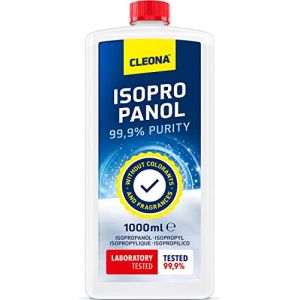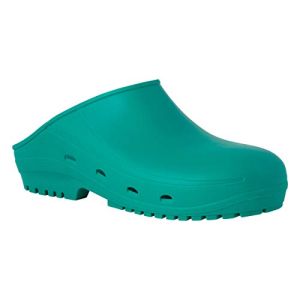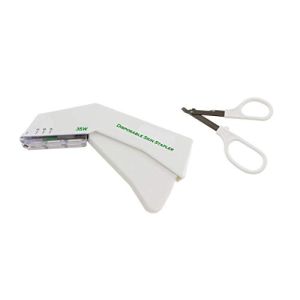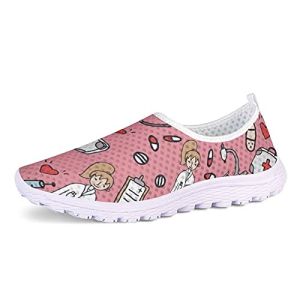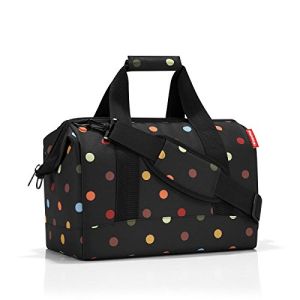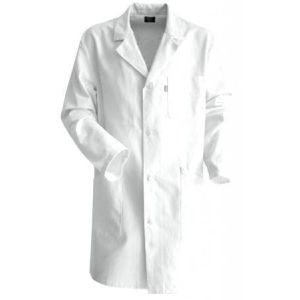How to Properly Maintain Your Medical Apparel
Your outfit is more than just a uniform: it reflects your professionalism and ensures your protection, as well as that of your patients. Properly maintaining your medical clothing is essential to preserve its quality, appearance, and functionality. Discover our practical tips to extend the lifespan of your medical apparel while maintaining impeccable hygiene.

1. Understanding the Materials of Your Medical Attire
Before beginning the maintenance of your uniforms, it is important to first understand the materials they are made of. The most commonly used fabrics in medical attire are:
- Cotton: Valued for its softness and breathability, it offers great comfort. However, it can shrink when washed and requires careful maintenance.
- Polyester: This synthetic fabric is durable, dries quickly, and retains its shape well. It is less breathable than cotton but offers increased durability.
- Cotton-Polyester Blends: These combine the advantages of both materials, providing comfort and longevity.
- Technical Fabrics: Designed for medical use, they have specific properties such as antimicrobial and moisture-wicking features.
It is essential to carefully read the care labels on your garments. They provide valuable information on washing temperatures, drying methods, and ironing instructions.
2. Pre-treating Stains Before Washing
Medical clothing is often exposed to tough stains like blood, bodily fluids, or chemicals. Proper pre-treatment is essential to preserve the quality of your uniforms.
2.1. Blood Stains
Act quickly by rinsing the stain with cold water. Avoid hot water as it can set the blood into the fibers. Then apply hydrogen peroxide to the stain, let it sit for a few minutes, and wash as usual.
2.2. Other Stains
Use a stain remover suitable for the type of stain (grease, ink, etc.). Apply it directly to the stained area and let it sit according to the product instructions before washing.
3. Adopting an Optimal Washing Procedure
Proper washing is essential to remove contaminants while preserving the integrity of your clothing.
3.1. Sorting the Laundry
- By Color: Separate whites, light colors, and dark colors to avoid color bleeding.
- By Fabric Type: Wash similar fabrics together for suitable care.
3.2. Choosing the Temperature
To eliminate bacteria and viruses, a high washing temperature (60°C or more) is recommended if the fabric allows. For delicate fabrics, use a temperature of 30-40°C and add a laundry disinfectant.
3.3. Choosing the Detergent
Opt for a gentle detergent without harsh bleaching agents. Detergents specifically formulated for medical clothing are ideal as they respect the fibers while ensuring thorough cleanliness.
Using Appropriate Wash Cycles
Choose the wash cycle suited to your clothing (cotton, synthetic, delicate). Avoid overloading the machine to allow effective cleaning and prevent premature wear of the fabrics.
4. Drying and Ironing Medical Uniforms
To preserve the quality of your medical uniforms, use appropriate drying and ironing methods.
4.1. Drying
- Air Drying: This is the gentlest method for your clothes. Hang them in the shade to prevent colors from fading in the sun.
- Tumble Drying: If you use a dryer, select a low-temperature program to protect the fibers. Always check the label instructions.
4.2. Ironing
Ironing helps to eliminate any remaining bacteria through heat. Set your iron according to the fabric type and iron your clothes inside out to protect colors and any prints.
5. Proper Storage of Your Medical Clothing
Proper storage extends the lifespan of your uniforms and maintains their professional appearance.
- Post-Wash Storage: Carefully fold your clothes or hang them on hangers to avoid creases and deformation.
- Protection from Contaminants: Store your uniforms in a clean, dry place away from dust. Use garment bags if necessary.
- Rotate Uniforms: If you have multiple sets, rotate them to reduce wear and allow each uniform to "breathe" between uses.
6. Specific Care for Different Types of Clothing
Medical uniform care should be adapted to each type of clothing:
6.1. Coats and Tunics
Regularly check seams, buttons, and zippers. Immediately repair small snags or tears to prevent them from worsening.
6.2. Medical Pants
Areas like the knees and pockets are prone to wear. Reinforce them if needed, or consider replacement when they show signs of fatigue.
6.3. Medical Shoes and Clogs
Clean them with a damp cloth and mild soap. Disinfect regularly, especially the insides, to prevent odors and bacterial growth. Allow them to dry completely before wearing them again.
7. Tips for Prolonging the Lifespan of Your Clothing
To make your medical uniforms last longer:
- Avoid Overloading: Don't overfill your pockets to prevent deformations and tears.
- Wear Suitable Undergarments: They absorb sweat and protect your uniforms from body stains.
- Limit the Use of Fabric Softeners: They may alter the properties of technical fabrics and reduce breathability.
- Invest in Quality: High-quality garments, such as those offered by Placemed, provide better durability and wear resistance.
8. Adopting Eco-Friendly Care
Protecting the environment while caring for your clothes is possible with a few simple actions.
- Use Eco-Friendly Detergents: They are less polluting and equally effective for cleaning your uniforms.
- Wash at Lower Temperatures: Whenever possible, choose washes at 30°C to save energy.
- Repair Rather Than Replace: Extend the life of your clothes by making small repairs instead of discarding them.
9. Professional Cleaning vs. Home Care
9.1. Advantages of Professional Cleaning
- Removal of stubborn stains through specialized techniques.
- Deep disinfection for maximum hygiene.
- Time-saving for busy professionals.
9.2. When to Opt for Professional Cleaning
If your uniforms are heavily contaminated or made of delicate fabrics, professional cleaning may be a wise option. Assess the cost and frequency to determine if this solution fits your needs.
10. FAQ
10.1. How Often Should I Wash My Medical Clothing?
To ensure perfect hygiene, it is recommended to clean your attire at the end of each workday.
10.2. Can I Wash My Medical Clothing with Other Laundry?
It is best to wash your medical uniforms separately to prevent cross-contamination and ensure appropriate cleaning.
10.3. How Do I Remove Persistent Odors?
Add a cup of white vinegar or baking soda during washing to neutralize odors.
10.4. Are Laundry Disinfectants Necessary?
They are highly recommended, especially if you wash at lower temperatures, to eliminate microorganisms.
10.5. How Can I Prevent My Uniforms from Shrinking?
Follow the washing temperatures indicated on the label and avoid the dryer if the fabric is not suitable for it.
11. Conclusion
Taking care of your medical clothing is essential to ensure comfort, safety, and a professional image. By adopting good care practices, you extend the lifespan of your uniforms and save money in the long run. Remember that the initial quality of your clothing plays a key role in its longevity. Investing in high-quality work attire, available on Placemed, is a wise choice!
Feel free to leave your tips in the comments to support the medical community in the optimal care of their uniforms.
 Francais
Francais 


